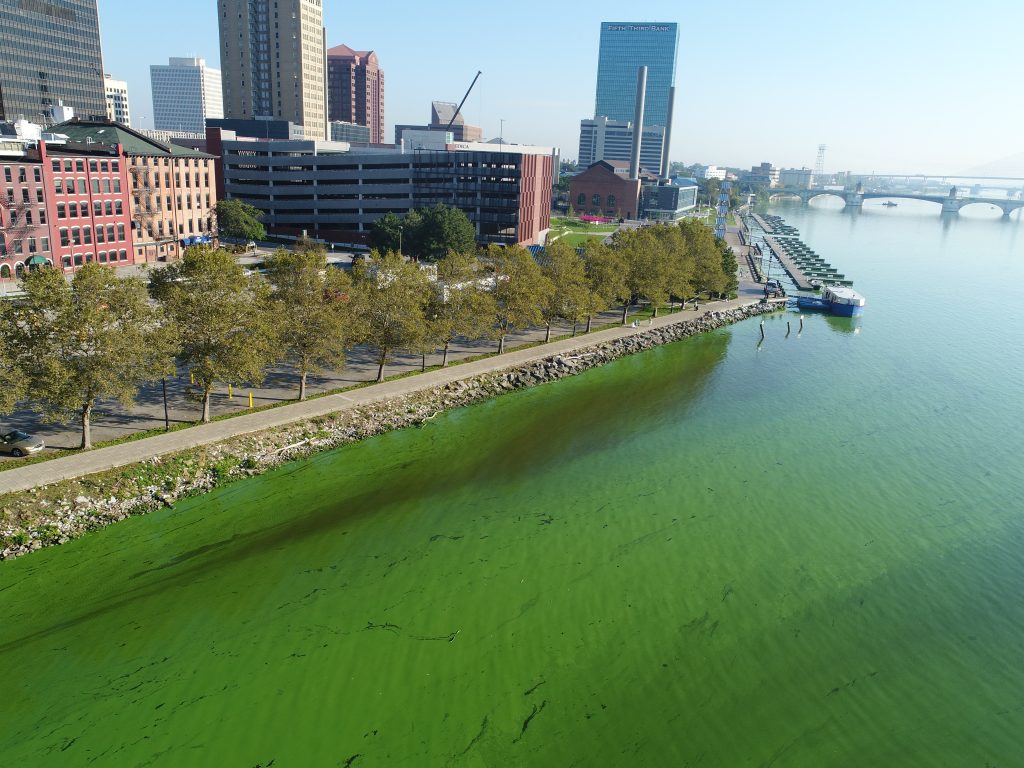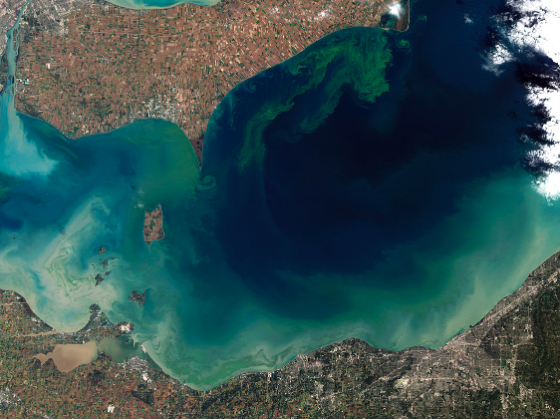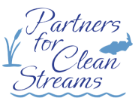Excessive use of fertilizers, especially on already healthy lawns, leads to nutrient runoff (mainly nitrogen and phosphorus) into local waterways. This runoff can cause eutrophication, an overgrowth of algae that depletes oxygen in the water, harming aquatic life and potentially creating ecological “dead zones.” Over application of fertilizers can lead to Harmful Algal Blooms (HABs) that we see in our area and the western basin of Lake Erie during the summer. To prevent this:
- Use fertilizer only when needed, especially in early spring after watering (not before rain).
- Choose the right grass seed, like turf-type Tall Fescues and Perennial Rye for Northwest Ohio, which are drought-resistant and low-maintenance.
- Minimize lawn size and use native plants to reduce the need for fertilizer.
- Leave grass clippings and mulched leaves on the lawn. They naturally return nutrients to the soil and reduce the need for chemical fertilizers.
- Test your soil to understand what nutrients it actually needs, your local conservation district or OSU Extension Office can help.


Smart lawn care starts with good choices and can help protect local water quality.
A few years back, we worked with a seed company to produce these seed mix fact sheets specific to different soil types for our area, check them out!
Visit the Lake Erie Starts Here (lakeeriestartsherenwo.org) website for more information on how to be fertilizer wise, and for additional resources!

